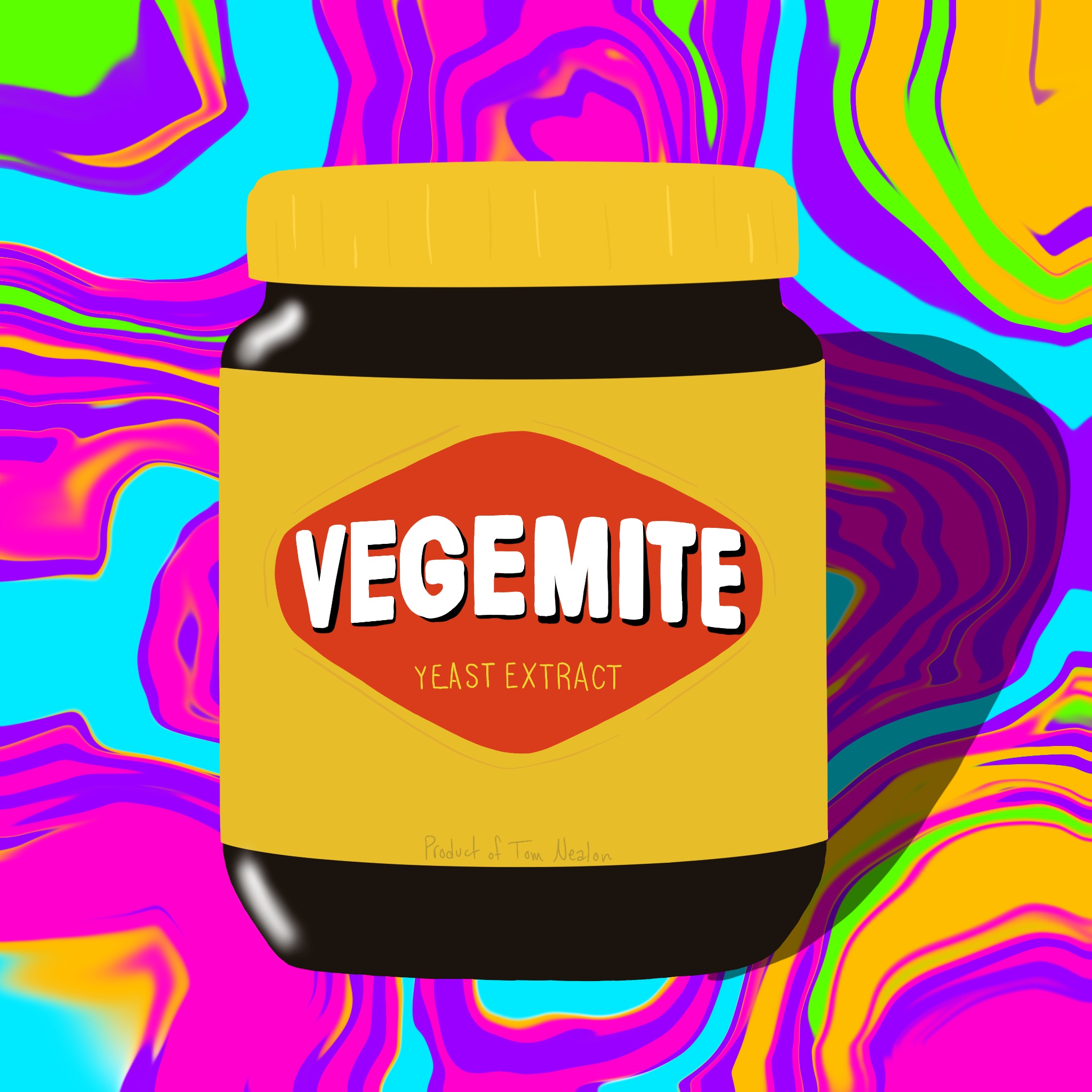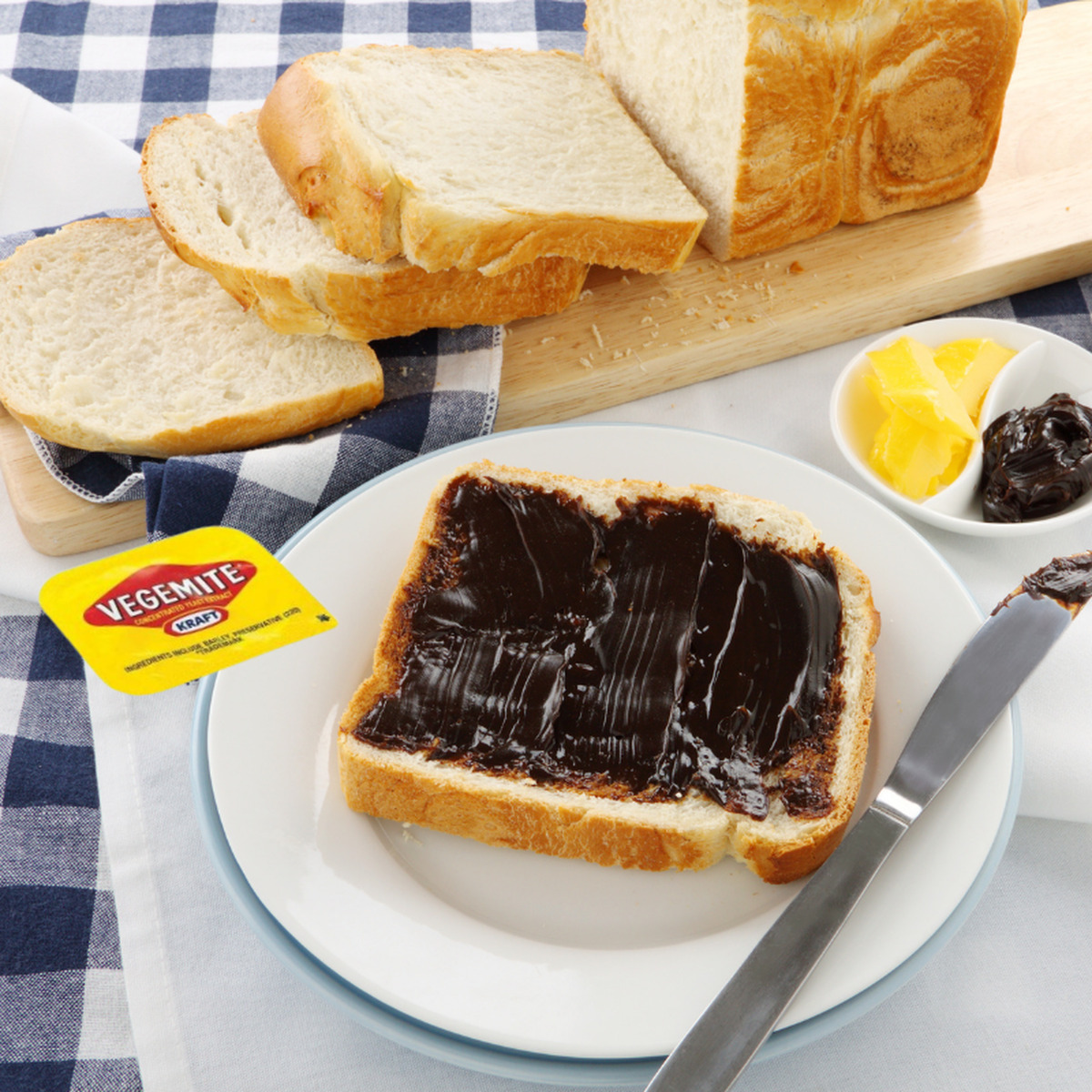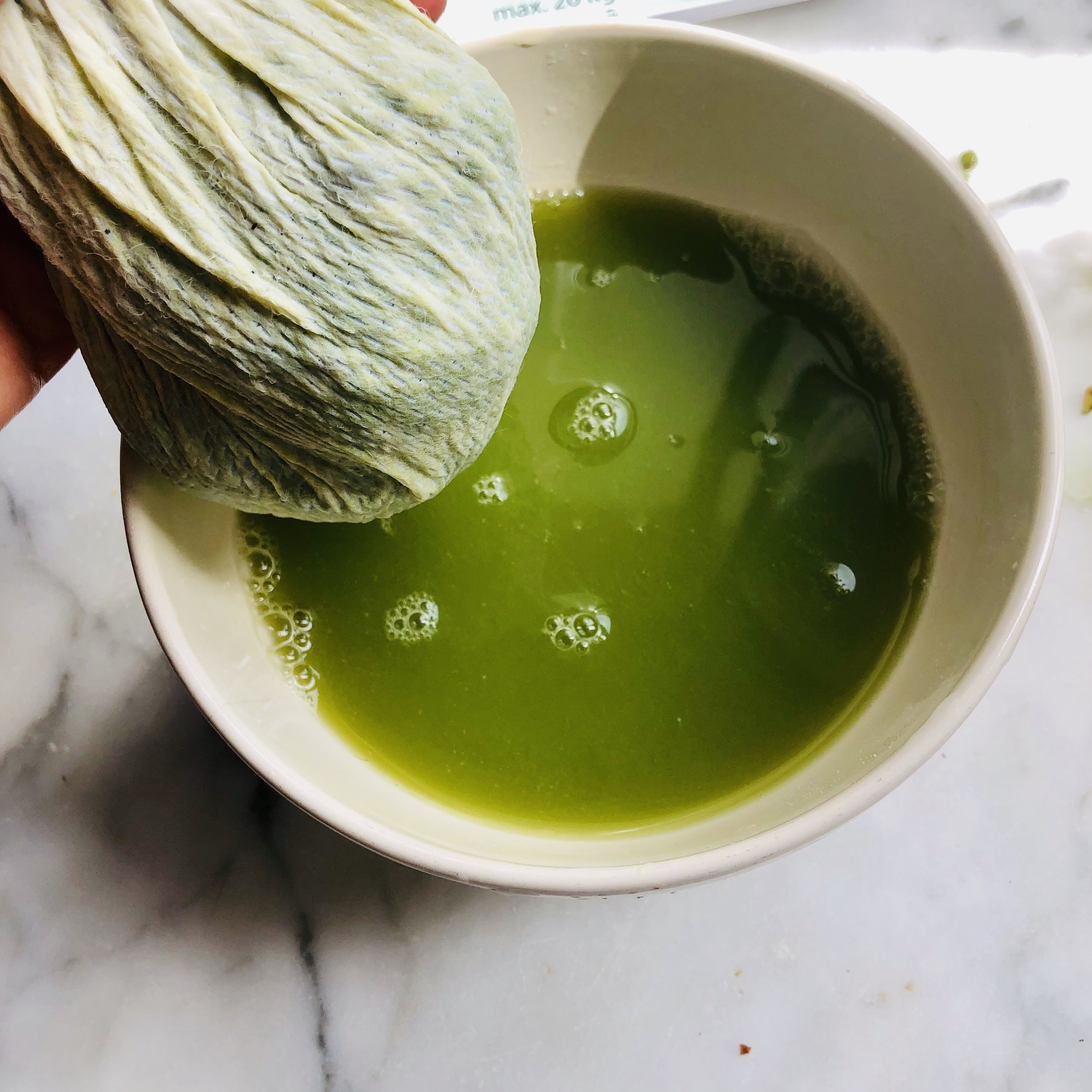V IS FOR VEGEMITE
By:
April 27, 2024

An installment in CONDIMENT ABECEDARIUM, an apophenic food-history series from HILOBROW friend Tom Nealon, author of the seminal book Food Fights and Culture Wars: A Secret History of Taste (2016 UK; 2017 US); and also — here at HILOBROW — the popular series STUFFED (2014–2020) and DE CONDIMENTIS (2010–2012).
CONDIMENT ABECEDARIUM: SERIES INTRODUCTION | AIOLI / ANCHOVIES | BANANA KETCHUP / BALSAMIC VINEGAR | CHIMICHURRI / CAMELINE SAUCE | DELAL / DIP | ENCURTIDO / EXTRACT OF MEAT | FURIKAKE / FINA’DENNE’ | GREEN CHILE / GARUM | HOT HONEY / HORSERADISH | INAMONA / ICE | JALAPEÑO / JIMMIES | KECAP MANIS / KIMCHI | LJUTENICA / LEMON | MONKEY GLAND SAUCE / MURRI | NƯỚC CHẤM / NUTELLA | OLIVE OIL / OXYGALA | PIKLIZ / PYLSUSINNEP SAUCE | QIZHA / QUESO | RED-EYE GRAVY / RANCH DRESSING | SAMBAL / SAUERKRAUT | TZATZIKI / TARTAR SAUCE | UMEBOSHI / UNAGI SAUCE | VEGEMITE / VERJUS | WHITE GRAVY / WOW-WOW SAUCE | XO SAUCE / XNIPEK | YOGHURT / YEMA | ZHOUG / ZA’ATAR | GOOD-BYE TO ALL TZAT(ZIKI).

The red-headed stepchild of Liebig’s Extract of Beef — melted, compressed essence of a million cows — vegemite is an Australian tradition and beloved condiment even though it doesn’t really go on anything.
When the export of British Marmite — made from autolyzed cast-off brewer’s yeast — was disrupted during World War I, Australia was forced to invent their own version or else, presumably, expire from lack of brown ooze on their toast.
Marmite was — like Liebig’s Extract — invented by the German chemist Justus Liebig. After his successes with turning South American cows into ooze and then into liquid (OXO) and then into cubes (OXO bouillon cubes), Liebig turned his attention to cast-off brewer’s yeast. He invented a process called autoylization in the late 19th century which essentially used salt to explode the yeast cells and make them disgorge their insides. Their insides, conveniently, are full of B vitamins and glutamates — the glutamates immediately bonded to the salt to form MSG, and Marmite was born.
MSG itself wasn’t isolated until some decades later by Professor Ikeda who isolated the curious deliciousness of seaweed broth, but it was in the Marmite just the same. In fact, ever since the MSG scare in the late ’60s, companies have hidden MSG in our food as autolyzed yeast and salt, as if they stay separate and don’t immediately form MSG.
Unsurprisingly, then, Vegemite’s main flavors are extremes of salty and umami, with an earthy sort of bitterness, and it works pretty well as an ingredient for sauces (sort of like adding anchovy paste). Marmite, broadly similar, is a little sweeter and lacks the yeasty bitterness of Vegemite. Both taste a little like eating a beef bouillon cube, but in a (mostly) good way.
People in Australia love this stuff with the white-hot passion humans reserve for things that we sort of like but that other people think are disgusting: Haggis, lutefisk, bat soup, whale, duck embryo, testicles. I think it’s pretty good once in a (long) while and definitely worth a try if you never have — or even if it’s just been awhile. Vegemite has a really pronounced bitterness to it, and if you’ve spent the last few years destroying your tastebuds drinking IPAs and discovering that you suddenly like brussel sprouts, it might be just the time to tuck into some.

Verjus (or verjuice) is unripened grape juice. In use, it is most similar to vinegar — but it’s a lot easier to make. Used in almost all wine cultures in one way or another for thousands of years, it is agraz in Spain, ghooreh in Iran, hosrom in Lebanon. It was a common ingredient in the middle ages in northern Europe before lemons were readily available and appears frequently in important manuscript cookbooks like the late 14th century Forme of Cury as an ingredient in the breadcrumb-thickened sauces that were popular.
About as acidic as vinegar or lemon juice, verjus can be substituted for those with…interesting results. Because its sourness is a mix of tannins from the skin and the normal grape acids (malic, tartaric, citric) it behaves a little unpredictably. However it has a great, bright flavor that isn’t quite like anything else and is pleasant to drink in small quantities — as well as being great as a marinade, dip for fish, as a component of mignonette for oysters, or to add to rice dishes to get a brightness similar to what you get from adding lime or lemon juice.
Verjus was the original liquid in Dijon mustard for over 500 years before it was replaced by white wine vinegar in 1856, so you would be on firm ground if you insisted that verjuice was the proper ingredient. Since it was replaced for reasons of shelf stability and ease of transport, not flavor, you might even be right. Since mustard is extremely sensitive to changes in liquid and temperature of liquid, using verjuice does produce a noticeably different flavor and is worth messing around with if you like to make your own mustard. You could even use it instead of water with something like Colman’s mustard powder if you like a little extra whaaaaa???? in your mustard.
Every year I end up with a bottle or two of verjuice because the idiot squirrels in my neighborhood can’t wait for my Concord grapes to ripen before eating them. As a result, I am forced to pick a ton of them unripened and turn them into verjuice instead of grape juice or jam as I might prefer. (Do the squirrels complain about how I’ve taken to picking my grapes when they aren’t yet ripe? While muttering to myself about them? I hope so.) I’ve come to enjoy the harvest and the weird swirly jars of verjuice that result — the unripened juice still betraying the confusion of elements that in a few more weeks would have coalesced into grape but are stuck in a deliciously sour state of almost.
TOM NEALON at HILOBROW: CONDIMENT ABECEDARIUM series | STUFFED series | DE CONDIMENTIS series | SALSA MAHONESA AND THE SEVEN YEARS WAR | & much more. You can find Tom’s book Food Fights & Culture Wars here.
